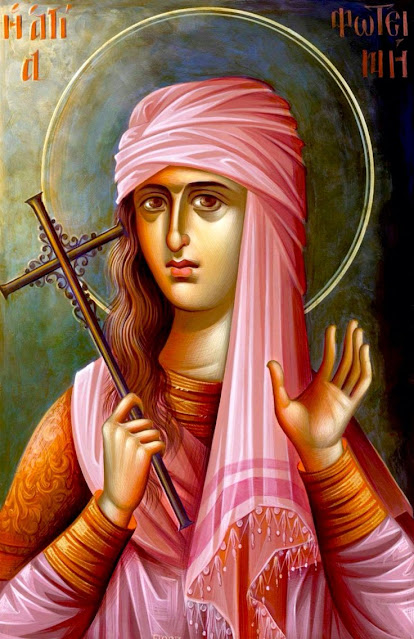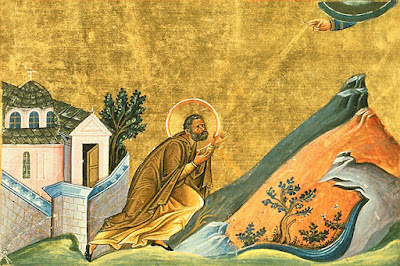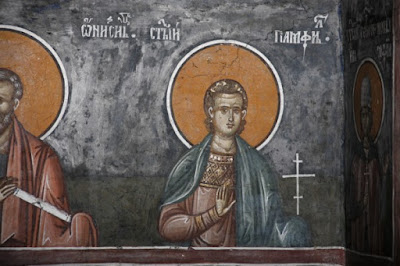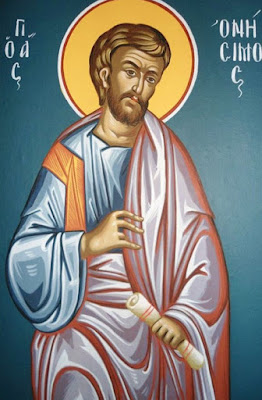
The Holy New Martyr Nicholas was born around 1520 in Ichthys (or Psari), a village of Corinth. When Nicholas was twelve his parents John and Kali died from an unknown cause. As an orphan Nicholas joined some fellow villagers seeking a better life and went to Selybria of Eastern Thrace, near the city of Constantinople. There he married a Christian woman and bore children. His childhood poverty made him merciful towards the poor, whether they were Christians or Muslims. However, certain Muslims slandered him and accused him of ridiculing the Islamic faith, and this was reported to the ruler of Constantinople named Sinan, a relative of Suleiman the Magnificent. Brought before the ruler, Nicholas denied that he had ridiculed Islam, yet he still confessed his Orthodox Christian faith after being told to renounce it and embrace Islam or die. For this he was thrown in prison for four days without food or water, and on the fifth day the ruler had Nicholas bound throughout his body with chains. Then he was brought to a public place in Constantinople where a great fire was lit, and there he was slowly burned to death. This took place on Thursday, February 14, 1554.
A pious Christian recovered Saint Nicholas' sacred skull for a payment to the Turks, and he brought it to the Great Meteoron Monastery, where it is still kept today. Four years later, in 1558, Saint Damaskenos the Studite wrote his life and composed a service to the Holy Neomartyr. Unfortunately, however, this text and his memory became lost to history, until 1928 when a copy was discovered in the ruins of the Monastery of the Holy Trinity in Siamou, in Pindos, by Metropolitan Ezekiel of Thessaly (1874-1953). This Monastery had been one of the 420 monasteries in Greece destroyed by the Bavarian Protestants when Otto became King of Greece. News of this discovery was of particular interest to the residents of the small village of Psari in Corinth, where Saint Nicholas was born and raised, and they immediately claimed him as their patron.
In 1968 the residents of Psari built a church in honor of Saint Nicholas of Ichthys, although it was not consecrated until June 5, 1988 by Metropolitan Panteleimon of Corinth. On June 6, 1992 the skull of Saint Nicholas returned to his homeland in Psari from Great Meteoron Monastery, to the great joy of the faithful. A portion was left behind, while the rest of the skull was returned to Meteora. The interior of the church was decorated with iconography in 2006, among which depict the life story of Saint Nicholas. His memory is celebrated on February 14th and the Sunday after June 5th.
The Service of Saint Nicholas can be viewed here.
Apolytikion in the Fourth Tone
Being of like manner with the martyr athletes, and a champion of those in need, entreat the Master of all, to grant peace to the ecumene, and to our souls the great mercy.
Apolytikion in Plagal of the First Tone
Having accomplished your martyrdom well in the stadium, you were made worthy of the bright lot of martyrdom, and you grant to the faithful heavenly grace. Wherefore your beautiful fatherland, is glad in you, Neomartyr Nicholas, do save us from all our needs, through your intercessions O Saint.



























